Ella was the second child in her family. The children were raised in the traditions of old England. Their life went by a strict regiment set by the mother. The children's clothing and food was very simple. The three older daughters did housework all by themselves. they cleaned up the rooms, made their beds, kept the fire in the fireplace.Later Elizabeth Feodorovna would say: "at home I was taught everything"
The parents of Elizabeth Feodorovna - the Great Herzogg of Hesse-Darmstadt Louis IV and princess Alice - the daughter of Queen Victoria, used most of their money for charity purposes.
And the children often went with their mother to hospitals, orphanages, houses for invalids. With them they brought many flowers, which they took to the sick. The mother tried hard to notice the development of each of her children's talents, and to raise them in accordance with the foundation of Christian commandments, to love their neighbors, and especially the suffering.
Sisters Alex, Victoria, Ella, and Irene.
Everyone who knew Elizabeth from her childhood noticed in her a love for her neighbor. After the death of her mother, who died at the age of 35, Ella with all her strength tried to ease the suffering of their father, to support him, console him. She replaced her mother for her younger brother and sisters.
At the age of twenty princess Elizabeth was wed to the Great Duke Sergei Alexandrovich. Before that all the other suitors were refused. From her early youth she gave her heart to the Great Duke, who often came to visit them with his mother - the Empress Maria Alexandrovna.
Ella left for far-away Russia, and parted with her relatives. .
""... Soon her train came up. She appeared next to the Empress, and we were all blinded as if by the sun - I have not seen such beauty in a long time. She walked with humility, almost shyly, like a dream..."
1884, Moscow, Day of the Holy Trinity, May 27.From the memoirs of the Great Duke Konstantine Konstantinovich Romanov (K.R.)
At the time people would say that there were only two beautiful women in Europe - and both were Elizabeths: Elizabeth of Austria, the wife of Emperor Franz-Joseph, and Elizabeth Feodorovna. The wedding was in the church of the Winter Palace on June 3 of 1884. A lady who was present at the wedding said that Elizabeth Feodorovna was the most beautiful lady ever to wed at the Palace church.
Elizabeth Feodorovna and Sergei Alexandrovich spent their honey moon at the summer residence of Ilyinsk, which is located sixty kilometers from Moscow, on the bank of the Moscow River. Here was the great Russian nature of the temperate zone. Later this residence will be their favorite. Here Elizabeth began learning Russian.
The Great Duke K.R. often visited them in Ilyinsk. He wrote: "What silence, what tranquillity and serenity. I was happy there... My soul was quiet and untouched by other things... Sergei and I went out for a walk... We started talking, and he told me about his wife, he praised her, and every time praised God for his fortune - and I was happy for him..."
The nature of that part of Russia with its vast fields, unlimited horizon, evergreen forests and white birch trees, were attractive to the Great Duchess.
She wrote to her brother Ernest: "... Sergei and I went for a walk in the fields. We gathered many flowers - namely cornflower... we found a nest with birds... there are a lot of strawberries, but they are not quite ripe yet..."
A picnic in Ilyinsk
Sergei Alexandrovich and Elizabeth Feodorovna were very hospitable. Relatives and friends were often guests at Ilyinsk. Anyone who has ever visited them took with him an feeling of warmth and lightness. Here Sergei Alexandrovich and Elizabeth Feodorovna celebrated their namesdays. There were often markets for the poor, and a hospital was built there as well.Elizabeth Feodorovna was involved in charity.
Elizabeth Feodorovna becomes Orthodox. She writes: "I have thought long of this, and being in this country for over six years I know now that The Faith is found. I greatly desire to partake of the Holy Mysteries on Pascha with my husband..."
That year they moved to Moscow - Segei Alexandrovich became the general-governor.
Sergei Alexandrovich and Elizabeth Feodorovna were very attached to each other. Sergei Alexandrovich wished to accompany her everywhere.
She valued this and said: "I am happy and loved." When she had the opportunity to visit her relatives in Darmstadt she would write to her brother Ernest that she would greatly love to go, but that her duty to her husband and as a Great Duchess goes first and that she could not leave her husband even for a while, for he is that important to her.
"She was able not only cry with those who cry, but also to be merry with those who are merry, which is often harder to do than the first. To find something good in every person was the goal of all her heart." (From the memoirs of metropolitan Anastasius)
Elizabeth Feodorovna loved nature, and especially flowers, which she drew with great fascination.
She had a talent for drawing, and spent much time on it. Later at the Martha and Mary Home she would paint icons for the sisters.
She loved classical music, and had a low beautiful voice - an alto.
Tragic year of 1905, February 5.
The year of Sergei Alexandrovich's death.
In 1905 on February 5 there was a great explosion in the Red Square, which broke the windows in neighboring houses.
The terrorist Kolyaev through the bomb at the carriage of Grand Duke Sergei Alexandrovich. When Elizabeth Feodorovna arrived at the place of the explosion she saw a picture that surpasses the human imagination. Quietly without tears or crying, she stood on her knees upon the blood-stained snow, and began putting parts of her beloved husband's body, which was alive but a few minutes ago, on a stretcher.
The memorial cross at the place of Sergei Alexandrovich's death.
The 6-meter high, bronze cross, was made according to the project of V.M. Vasnetsov. It was set up on a podium of noble green rock. According to the rquest of Elizabeth Feodorovna an inscription that said "Forgive them, O Father, for they know not what they do." was made upon the cross. The place was respected, and many people would come there.
An old tour guide says: "No one walks by the Kremlin, without walking up to the small fence and making the prayer: 'bring to rest, O Lord, the soul of thy servant Sergei.'"
After the death of Sergei Alexandrovich, Elizabeth Feodorovna spent much time in hospitals taking care of wounded soldiers. Her soul required this, and it gave her consolation in her grief, as she told her relatives.
When the project of a house of mercy was first brought up she wrote: "I take this not as a cross, but as a light- filled journey that the Lord takes me on after Sergei's death. This is what my soul had yearned for, for many, many years. I did not know when - but I think from my very childhood, I wanted to help the suffering, and especially those who suffer in their soul... This is not a new feeling, it has lived in me ever before this, the Lord was merciful unto me." Using her money Elizabeth Feodorovna bought a plot of land in Zamoskvorech'e (the part of Moscow that lies to the south of the Moscow River).
She begins the building of the Martha and Mary Home. "A great beginning in Moscow" - so did her contemporaries call the project of the Great Duchess. But many did not understand her, did not support her, blamed her of protestantism. They believed that one could do works of charity from "above" - without going to the monastery.
Before the opening of the house Elizabeth Feodorvna wrote to the states-lady Alexandra Nikolaevna Naryshkina: "I am happy that you share my belief in the rightness of the way chosen by me... I am alone... a certain nun of great faith and love for our Lord said to me: 'Put your hand into the hand of the Lord and go without wavering.' My dear friend pray that I shall always have that one support, which will always show me which way to go."
April 9, 1910 - Elizabeth Feodorovna and 18 other sisters are concecrated as merciful sisters of the Cross.
At the Liturgy after the concecration bishop Triphon said: "These clothes will hide you from the world, and the world will be hidden from you, but at the same time it will be a witness of your charity, which will shine before the Lord, and in His glory.
"... For the first time after being ordained abess Ella appeared in all white, whith an apostolnik, which covered her head and forehead, with a white scarf covering her apostolnik, with a cross and a prayer rope." (K.R., May 6, 1910)
"Many believe that I took up a cross too great for me. That I will either regret it later and throw it away, or fall under its weight... Of course I am unworthy of that immeasurable happiness, that the Lord has given me, - to go this way. I will not even try, and He Who is love itself, shall forgive me all my misdoings, for He sees how I wish to serve Him..."
The Royal Family visiting the Home
Elizabeth Feodorovna writes this about the Martha and Mary Home: "...We have good beds, beautiful rooms with bright wallpaper and summer (wicker) furniture. My rooms are big, roomy, light, cosy, and some how are witnesses of summer..."
From a letter of K.R. - "...Ella invited me to a cup of tea at her Home in Ordinka - it is so cosy there..."
The Home of Martha and Mary (a contemporary photo).
The window of the Abess / The Protection Cathedral
The windows of Elizabeth Feodorovan looked out on the altar side of the Holy Protection Cathedral. Usually she entered the church through the service door, where on the right there was a place for the abess, hidden from the rest of the praying people in the church. The Home itself and especially its services fascinated her contemporaries. This was due not only to the beauty of the church, but also to the well kept park with greenhouses. This was a single ensemble, which connected external and internal beauty.
"On the whole external setup of the Home the Great Duchess put a mark of elgance and a high level of culture. This was not because she really thought it important, but rather because her artistic soul was inclined to make it so." Wrote Metropolitan Anastasius in his memoirs.
A contemporary of the Great Duchess Nonna Greiton, a freulin of her relative princess Victoria wrote: "...She never used the words 'I can not', and there was never anything gloomy in the life of the Martha and Mary Home. Everything was contemporary there inside as well outside. Anyone who has been there took away with him a precious feeling."
The Great Duchess herself led an ascetic life. Being used form her childhood to do everything herself, she did not ask for anyone else's services. She participated in the work of the home as an ordinary sister, and took upon herself the most crucial jobs. In secret she wore a vlasianitsa (heavy uncomfortable clothing made out of wool) and heavy weights..
Father Metrophanes Serebrainsky - the spiritual father of the Matha and Mary Home.
Elizabeth Feodorovna learned of Father Metrophanes in 1906 after reading his book "The Diary of an Army Priest", and wanted to meet him at once. She called him out of Orel (where he had a parish) to go Moscow. Elizabeth Feodorovna saw at once an experienced and true spiritual shepherd. In her letters and meetings with him she asked him to be the spiritual father of the home. It is easily seen how much she valued Fr. Metrophanes from her letter to the Tsar (April of 1909): "For our doing Fr. Metrophanes is a blessing from God, since he put up the necessary foundation... He hears my confessions, he feeds my spiritual desire in the church, he helps me a great deal, and gives me an example of clean, simple life - so humble and simple in his immeasurable love for God and The Orthodox Church. After speaking to him for just a few minutes, I saw that this is a humble, clean man of God, servant of God, in our church.
The Great Duchess had the old Russian love for pilgrimages.
Not once did she go to Sarov, Pskov, Kiev, Optina Pustin, Zosimova Pustin. She had been to the Solovetsky Monastery, in Belgorod...
She secretely visited the sick pilgrims who awaited healing, and cared for them.
In 1914 she visited the monastery in Alapaevsk - the city, which later would become the place of her prison and martyrdom.
"... In the Nikolaevsk Palace we learned that Ella was in Moscow. I went to visit her at The Martha and Mary Home in Zamoskvorech'e. She met me with gentleness. She beams with holiness without a shadow of hypocricy; how much simplicity and truthfulness!.." - from the memoirs of K.R.
"With her she took the clean smell of lilies whereever she went; maybe that is why she loved white so much: it was the reflection of her heart." The memoirs of Archbishop Anastasius.

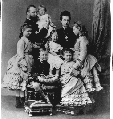

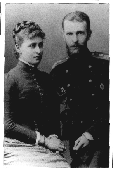
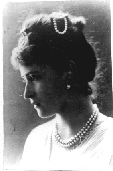
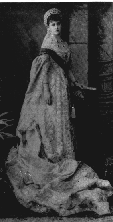
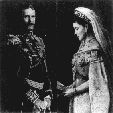

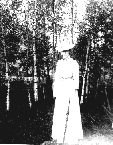
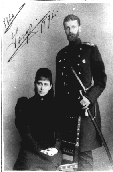

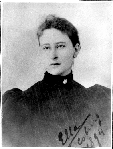
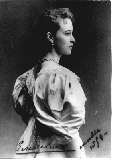




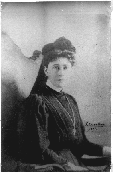
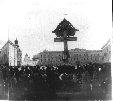
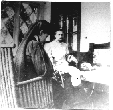
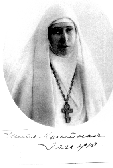
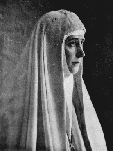








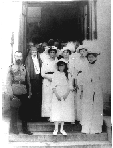
Комментариев нет:
Отправить комментарий